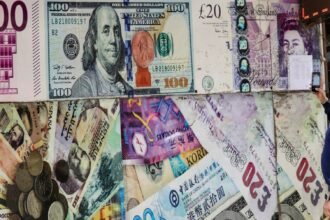
For centuries, diamonds have symbolised luxury and rarity. Now, a pioneering financial technology is transforming them into something far more significant: a regulated, tradable commodity with the potential to reshape Islamic finance and global investment.
At the heart of this innovation lies a powerful realization. While gold and silver have long served as tangible assets for trading and wealth preservation, natural diamonds, despite representing a 1.2 trillion-dollar global resource, have remained largely inaccessible to investors due to their unique and varied characteristics. Unlike other commodities, each diamond is slightly different in quality and composition, preventing the creation of a transparent, universal pricing structure.
“Natural diamonds are the only major natural resource that global investors couldn’t trade transparently,” explains Cormac Kinney, Founder and CEO of Diamond Standard. “Each stone varies in carat, clarity and color, which has made standardization nearly impossible. But through computer science and quantitative trading, we developed a method to group diamonds into standardized, fungible units, all having the same value.”
The result is a new form of investment-grade diamond bar, composed of stones carefully matched for value equivalence. These bars make it possible to trade diamonds in a manner similar to gold bullion, reliably, consistently and at scale. For Islamic finance in particular, the implications are substantial. Unlike metals such as copper, which are cumbersome and expensive to store and secure, diamond-based commodities are easier to custody and settle. This makes them an ideal asset for Murabaha-based financial instruments.
Each diamond bar includes a wireless computer chip that allows custodians and financial institutions to verify the asset’s presence and authenticity instantly. This chip issues a blockchain-based digital token that represents legal ownership of the physical commodity. The token itself is tradeable and can even be subdivided into micro-units called “Carats,” each fully backed by the underlying diamonds. This system ensures a high level of flexibility, transparency and security in commodity trading.
The launch of this innovation comes at a pivotal time. Recent regulatory changes in Islamic finance have restricted the use of derivatives such as options and warrants in Murabaha structures, pushing banks to seek new Shariah-compliant alternatives. “All major Islamic banks are now looking for compliant substitutes for physical settlement,” says Kinney. “We’re not changing the process. We’re simply offering a better, more cost-efficient commodity. That’s why banks and service providers have responded with such strong interest.”
Looking ahead, Kinney envisions a much larger role for diamonds in global finance. This includes their potential not only as a tradeable asset class but also as the foundation of a new digital currency. In a world increasingly interested in asset-backed digital systems, a diamond-backed currency could offer a Sharia-compliant and inflation-resistant alternative to cryptocurrencies. “Many Islamic institutions reject speculative instruments like Bitcoin. But a digital currency backed by real, audited diamonds could provide stability and compliance in one package. It’s a concept particularly attractive to BRICS countries and other diamond-producing nations,” adds Cormac Kinney.
With global demand projected to reach 100 billion dollars across Islamic finance and digital currency applications, diamonds, once seen purely as symbols of wealth and luxury, may soon underpin a new chapter in financial history. No longer just ornamental, they could become a foundational asset in the evolving landscape of ethical, secure and innovative finance.




















